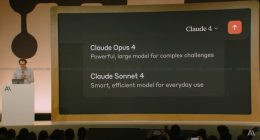Layoffs are, once again, coming to tech giants, and among them, once again coming to Microsoft. According to media reports, the Redmond-HQed tech behemoth has now commenced layoffs within its Azure cloud division, a decision that impacts hundreds of employees across various teams. Sources familiar with the situation have indicated that the layoffs have particularly affected the Azure for Operators and Mission Engineering teams, as well as the company’s mixed reality (MR) division.
Azure for Operators, which focuses on providing cloud solutions for telecommunications operators, has reportedly seen up to 1,500 job cuts, although this figure has not been officially confirmed by Microsoft. The Mission Engineering team, which works on strategic and innovative projects, has also been significantly affected. This team was part of the Strategic Missions and Technologies (SMT) organization, which was established in 2021 to house Microsoft’s most ambitious and forward-looking projects. Still, this team, tasked with exploring cutting-edge technologies like quantum computing and space engineering, appears to be a casualty of Microsoft’s renewed focus on AI.
The layoffs at Microsoft’s mixed reality division are hardly surprising, given that the company’s HoloLens 2 headset, spearheaded by the MR division, has struggled to gain widespread adoption so far. While the technology does offer a glimpse into a future where digital and physical worlds converge, the user acceptance of the device has been limited. This has prompted Microsoft to scale back its overall MR efforts, prioritizing continued support for existing customers like the US Department of Defense with its customized IVAS system based on the HoloLens technology.
Tech enterprises bringing job cuts to their organizations is nothing new, however, this year’s layoffs appear more extensive. Last year, Microsoft announced plans to cut 10,000 jobs, a move that was followed by additional rounds of layoffs. These workforce reductions are not isolated to Microsoft alone; the tech industry at large has seen similar trends, with companies like Google also making significant cuts to their cloud and AI teams. According to Microsoft, the current job cuts are “are a necessary and regular part of managing our business.” “Organizational and workforce adjustments are a necessary and regular part of managing our business. We will continue to prioritize and invest in strategic growth areas for our future and in support of our customers and partners,” a spokesperson for Microsoft commented on the matter.
For those who need a reminder, the HoloLens 2, introduced five years ago, has faced several challenges since its launch. While it secured a substantial contract with the U.S. Department of Defense, users reported issues such as nausea and discomfort. These setbacks have prompted Microsoft to refine and improve the device. Despite the layoffs, Microsoft continues to report strong financial performance. In the first quarter of the fiscal year, the company’s cloud division posted revenues of $35 billion, a 23% increase from the previous year. Similarly, Google’s cloud revenues rose by 28% to $9.6 billion.
The rationale behind these job cuts is clear: Microsoft is reallocating resources to solidify its position in the AI race. Both Microsoft and Google have been actively developing generative AI tools like Copilot and Gemini, respectively. The company has been investing heavily in AI over the past year, particularly through its partnership with OpenAI. Microsoft’s AI initiatives include the integration of advanced features in its Microsoft 365 suite, and these AI-powered technologies hold immense potential to revolutionize various industries, from software development to content creation.
The Tech Portal is published by Blue Box Media Private Limited. Our investors have no influence over our reporting. Read our full Ownership and Funding Disclosure →






